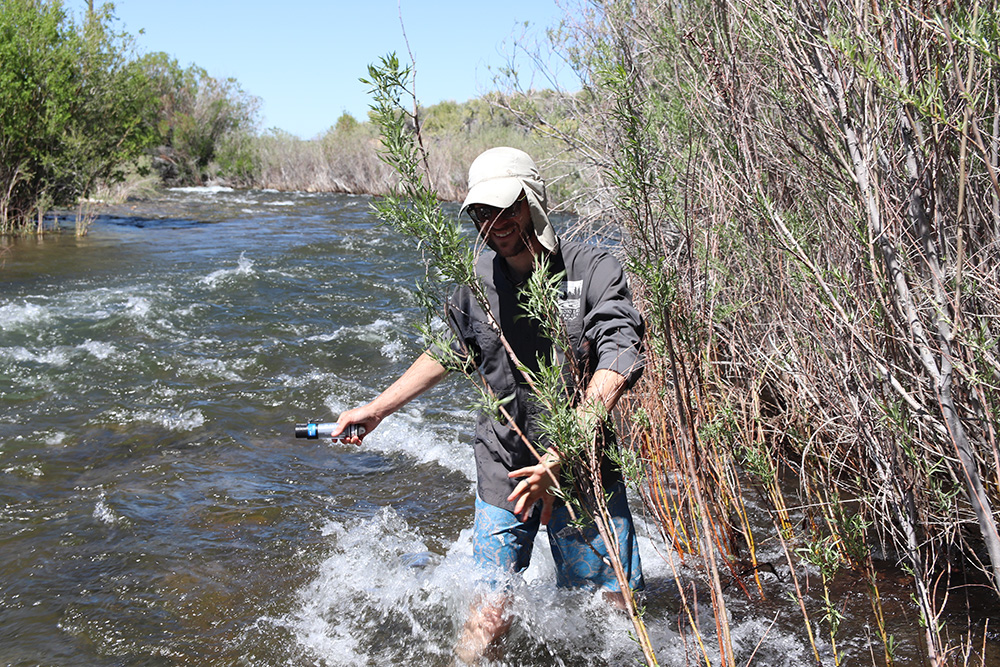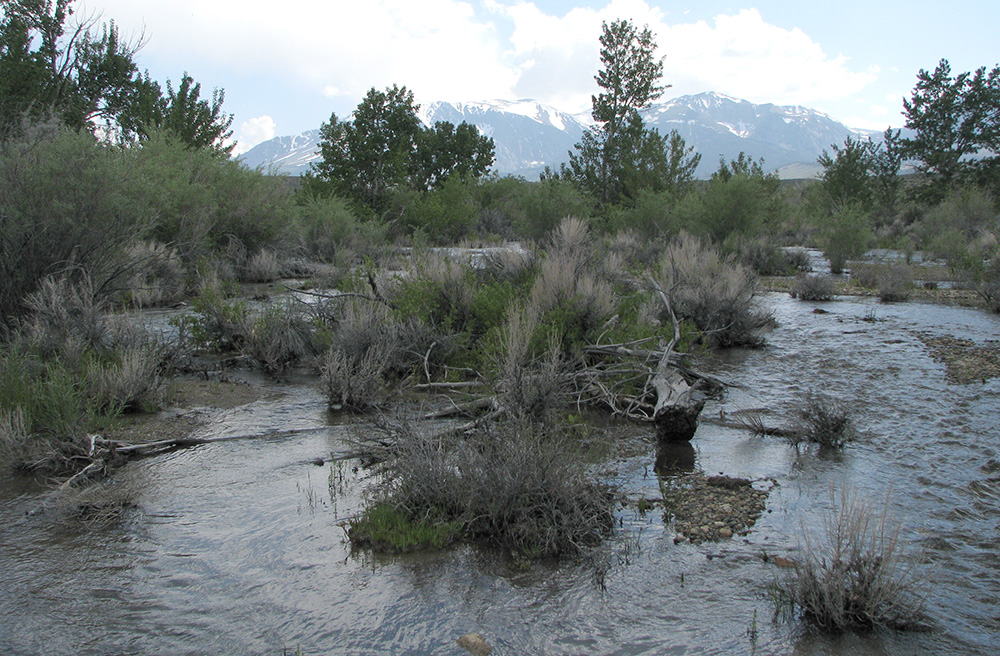
Peak snowmelt runoff on Mono Lake’s tributary streams is occurring!

Lundy Lake Reservoir is spilling, and the Rush Creek peak flow of 380 cubic feet per second (cfs) below Grant Lake Reservoir is being released over the next five days. So far, snowmelt runoff above the aqueduct has peaked at 272 cfs on Rush Creek, 238 cfs on Lee Vining Creek, 46 cfs on Parker Creek, and 23 cfs on Walker Creek. The flows should begin to subside soon given the rapid melting and limited snowpack.
Due to concerns about Grant Lake Reservoir levels the week-long 300 cfs flow following the Rush Creek peak has been eliminated. This should keep Grant Lake Reservoir above 25,000 acre-feet of storage, away from the lower levels that cause temperature and turbidity impacts to Rush Creek.

Peak flows provide water, energy, and sediment for stream restoration. The focus of the Mono Basin stream restoration is to mimic the natural hydrograph as much as possible in order to restore natural stream ecosystem processes that restore the conditions that benefited the pre-diversion fishery.
2018 has been a remarkable year for Mono Basin hydrology. A wet March pushed the Mono Basin year-type from the “Dry” category (with no required peak flows) to the “Normal” category (with significant peak flows). The last snow surveys around April 1 occurred prior to a very wet April and May, leaving a lot of uncertainty about how much snowmelt runoff to expect this year.
In addition, Southern California Edison is emptying Saddlebag Lake Reservoir by September 1 in order to repair a sinkhole, and it is keeping its upper Rush Creek reservoirs low due seismic concerns (as it has done each year since 2012). This also makes flows this spring higher than expected.
The Los Angeles Department of Water & Power issued an April 1 runoff forecast of 85% of average, however all indications are that it will be wetter, perhaps over 90% of average.
You can track most Mono Basin stream flows in real-time, as well as read our just-updated notes about the required and expected flows this year.
